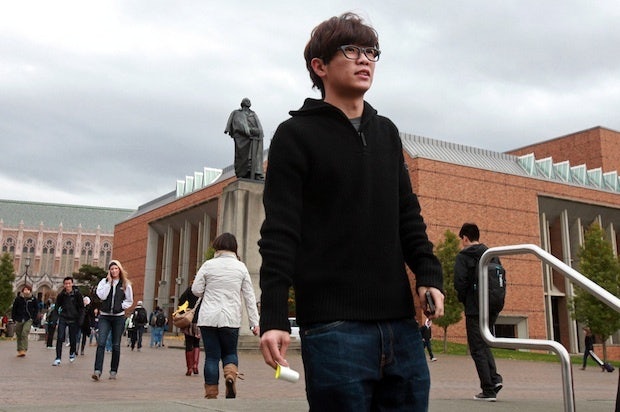"Sending A Child Abroad To Study Is Considered The Ultimate Luxury Purchase"#

Even the laziest of luxury industry observers could not fail to notice the unbridled increase in spending power of the collective Chinese luxury traveler in recent years.
More than 50 percent of China luxury purchases are made while traveling abroad, and this roving pack of luxury hoarders has become the key differentiator of growth between major prestige brands: brands with significant presence on the High Streets of China’s major cities have benefited the most. In Europe, tourists (predominantly those from Asia) account for between 35 and 60 percent of luxury sales, according to HSBC.
But the less-talked-about, and arguably more influential, luxury spending vector is the
Chinese overseas student community#
.
Given China’s one-child policy and cultural emphasis on education, sending a child abroad to study is considered the ultimate luxury purchase. According to the Hurun Report, 85 percent of Chinese High Net Worth Individuals and 90 percent of Ultra High Net Worth Individuals plan to send their children abroad for their education. The US is the top destination (27 percent), followed by the UK (22 percent) and Canada (15 percent).
The number of students studying in the U.S. is rising even faster than China's GDP. During the 2010-11 academic year, 157,588 Chinese students were studying in the US – an increase of 23 percent from the previous year, according to the Institute of International Education. Chinese students studying abroad already represent the largest group of international students in America (surpassing those from India) and during the next decade this group will become the world's largest "floating" student population.
Spending on education, specifically, is the third-largest class of spending among Chinese high net worth individuals. Annual Chinese high net worth consumption averages 1.45 million yuan (US$229,648), of which 12 percent goes to their children’s education. And this number only represents direct spending on education, not the accompanying investments in travel, real estate, cars and luxury goods that go hand-in-hand with overseas study.

While it is true that not every one of the more than 150,000 students studying in the US is a child of wealth and privilege, all of these young people are nonetheless recognized as authorities on overseas lifestyles by their friends and family. This gives Chinese students in America significant influence on luxury purchases within their extended social networks.
The next time you see a group of Chinese tourists shopping on Fifth Avenue or Rodeo Drive, look closely. That young person showing them around and acting as their translator is probably an overseas Chinese student.
China Luxury Advisors recently conducted research within this influential population. Of the students surveyed, 31 percent escort friends and family while shopping overseas at least once every quarter, while 34 percent purchase luxury goods to take back to China at least once per quarter.
A whopping 96 percent of students surveyed purchase luxury goods to take home at least once a year. Even more interesting: 74 percent of respondents are asked for their advice on luxury purchases by friends and family at least once a quarter.
But here’s the kicker: among this influential group, only 25 percent have been contacted by luxury brands during their stay overseas.
When building strategies to engage Chinese consumers, luxury brands need to recognize not only that the average age of a millionaire in China is just 35 (twenty years younger than in the US or Japan), but also that a kid from Xiamen studying at a Connecticut prep school will likely have as much influence on luxury purchases as a posse of 50-something Chinese executives.
This powerful demographic is the bright-eyed present and future of the prestige industry. Brands ignore Chinese youth at their peril.
Learn more about this valuable demographic, as well as Chinese luxury purchase influences and trends, at our Symposium in New York on Wednesday May 16th: “
Chinese Luxury Lifestyle Spending#
”
